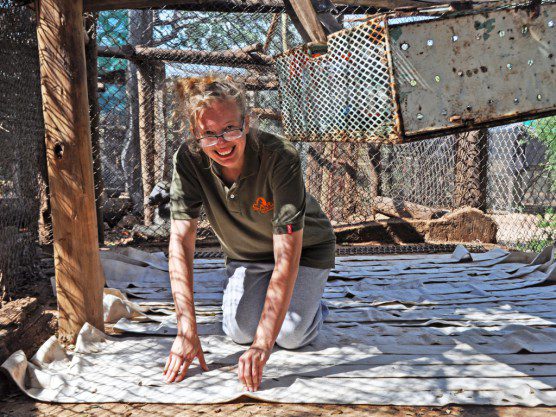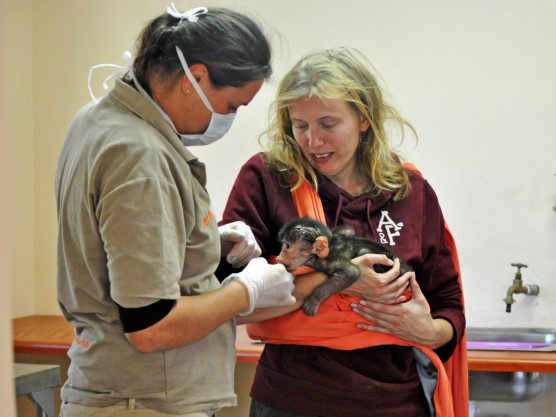Meet our girl Molly!

For several years, Molly Jorges has worked at the C.A.R.E. baboon rehabilitation center in Phalaborwa, South Africa. C.A.R.E. was founded by the late Rita Miljo in 1989. Rita and three other baboons (including Bobby, her first rescue) tragically died in a fire at the sanctuary during the night of July 27, 2012.
Working for baboons in South Africa has always been difficult, as many South Africans consider these monkeys to be vermin and have often persecuted them. But Rita did not view baboons that way. She thought they were wonderful beings.

King Augustus basks in the sun in an enclosure newly-renovated by Molly Jorges at the C.A.R.E. baboon rehabilitation center in South Africa.
Following Rita’s death, many feared that the sanctuary would die with her. But long-time sanctuary stalwarts Samantha Dewhirst and Stephen Munro have stayed on, and teams of volunteers have stepped into the breach. IPPL raised emergency funds for rebuilding the clinic that had also been destroyed by the fire. Now, every month we hear about progress on so many fronts. An electric fence has been put in place to keep transient elephants from causing damage. And the sanctuary has fostered better relationships with the South African authorities, who recently gave permission for two groups of baboons to be released back into nature.
At first, IPPL was aware mainly of the sanctuary’s rescue and care of orphaned baby baboons. But baby baboons grow up! In 2012, shortly after the devastating fire, we learned of one volunteer with a strong interest in the grown-up baboons who was keen to improve their living standards and attempt to socialize single-housed animals. Her name was Molly Jorges, and we got in touch with her. She was back in the States at the time and was a student with few assets. We invited her to apply for an IPPL small grant that would enable her to return to South Africa to resume her dream of making life better for C.A.R.E.’s older baboons by working there as an animal welfare coordinator.

Molly Jorges is hard at work upgrading a baboon enclosure at C.A.R.E. IPPL has been sponsoring her work as an animal welfare coordinator since last year.
Early last year she returned to C.A.R.E. and, with IPPL’s sponsorship, has been making wide-ranging improvements to the hoks (enclosures). Molly does an excellent job of keeping in touch, sending me regular reports on her activities. A couple of days ago, for example, she wrote to me:
I am nearly finished with Kong’s enclosure. I only have to add a tree to it, but I have had to wait until the chain saw was fixed. It is fixed now, and I will be adding the tree to the enclosure tomorrow, and then it can be opened hopefully on Tuesday. I will take pictures and post them once the cage is opened.
Once Kong’s enclosure is finished, I would like to remodel another enclosure for the Nthethe troop. This troop has 6 males and 8 females, and nearby are 2 lone males. They will gain double their current space, and the single males will be reintroduced to the enclosure.
In addition to the back-breaking work of remodeling the older baboons’ housing, Molly is also helping with release efforts, in keeping with C.A.R.E.’s increasing focus on sending rehabilitated baboons back to the wild. Molly wrote:
I will also be working on integrating our orphans into adult troops. Stephen doesn’t like to release troops that have fewer than 7 or 8 females because they are the core of the troop, and if any females are lost on the release, then the troop won’t survive. We just finished the integration of Simon’s troop, and we will soon be starting on a new troop called Timothy’s troop. At the moment, the Timothy’s troop is not releasable because there are only 4 females and 2 males.
I also want to add orphan females to troops that have plenty of males. We are going to record these integrations and write up what methods work best.

Molly Jorges holds a wounded baboon infant, Little Isaac, so the vet nurse can clean the little fellow up. The clinic at C.A.R.E. was rebuilt after the tragic 2012 fire with the help of IPPL funds.
But Molly is not above helping out an adorable infant or two. Little Isaac, for instance, was accepted into C.A.R.E.’s clinic earlier this summer with various wounds and abrasions, and Molly was happy to assist the veterinary nurse in getting the little fellow fixed up.
Molly plans to continue at C.A.R.E. for at least two more years. IPPL plans to be there for her!

